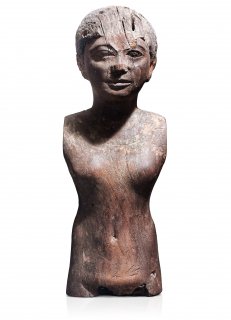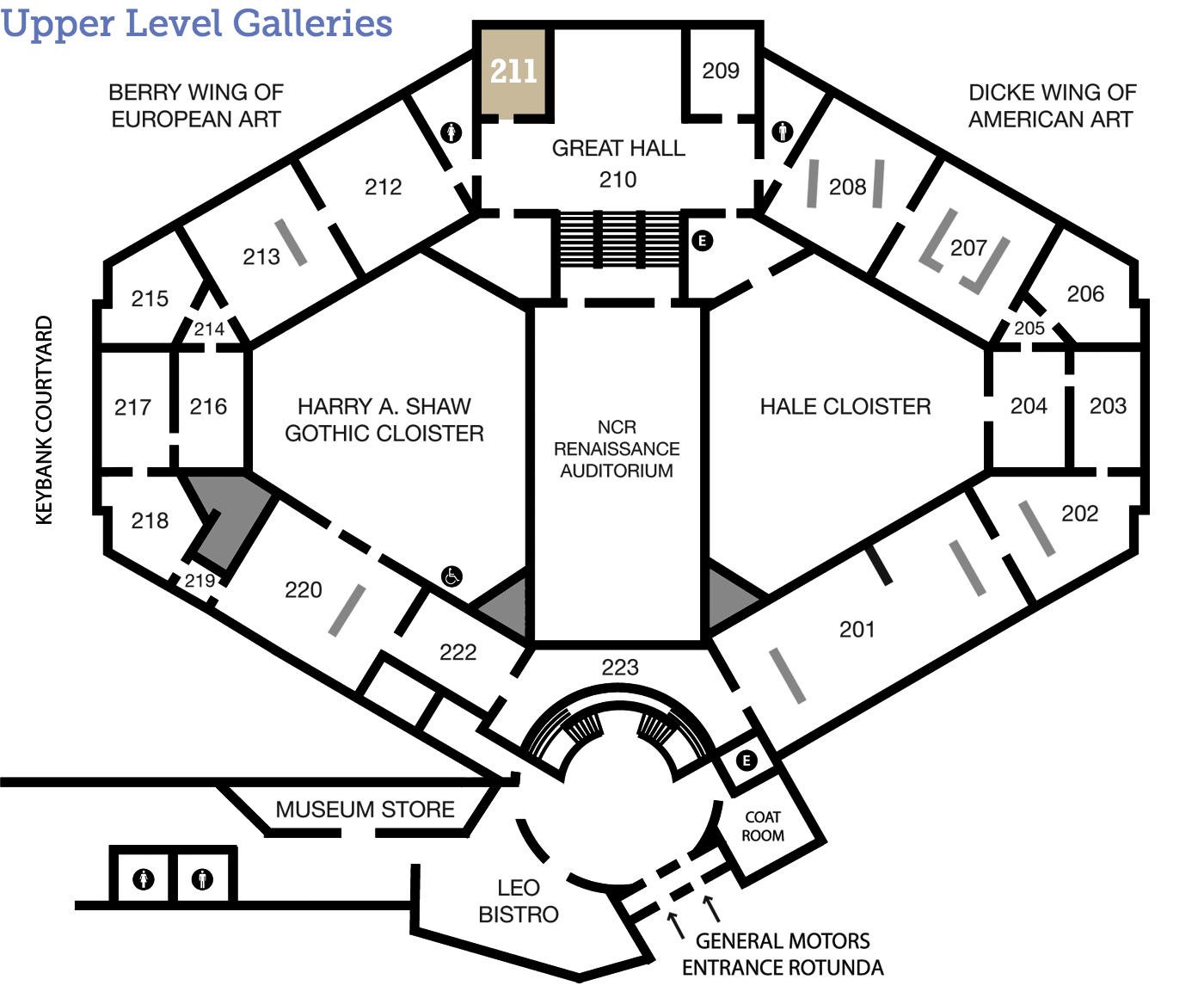
Egyptian
Head and Torso of a Female
Wood, pigment 13 x 4 ¾ x 4 ¼ inches Museum purchase with funds provided by the Jefferson Patterson Endowment Fund 1971.253
Enduring
Although it may look a little worn this sculpture has weathered thousands of years. Look past what is missing and discover something about ancient Egyptian culture as well as our endless fascination with the human figure.
A Day in the Life
Tools and Techniques
No Attachments
Originally, this would have been a complete figure with arms and legs. Look closer at the shoulder. Can you see a hole where the arm should be? The arms and lower body would be made separately and attached with wooden dowels inserted into the holes. This construction made labor and materials more efficient. Instead of a large, single block of wood, several smaller pieces could be used. And instead of one artisan working, several could be making different parts at the same time.
What does a complete figure look like? Here is one example from The Metropolitan Museum of Art. Notice the seams on the arms and waist that indicate where separate pieces are joined together.
Egyptian, Middle Kingdom, Dynasty 12, Guardian Figure, c. 1919–1885 BCE, cedar wood, plaster, paint, 22 11/16 x 4 5/16 x 10 ¼ inches. The Metropolitan Museum of Art, New York, Rogers Fund and Edward S. Harkness Gift, 1914, 14.3.17 (artwork in the public domain; photograph provided by The Metropolitan Museum of Art, www.metmuseum.org).
Behind the Scenes
Look Closer
Ancient Accessories
Look closer around the neck of this figure. Can you see curved, parallel lines and bits of color? These are traces of decoration meant to depict a kind of jewelry known as a collar necklace. Collar necklaces are concentric half-circles of beads that are typically made of faience, a quartz paste that can be molded. You can see an example from The Metropolitan Museum of Art below.
Egyptian, Middle Kingdom, Dynasty 12, Collar Necklace of Hapiankhtifi, c. 1981–1801 BCE, faience, blue green and black. Gift of J. Pierpont Morgan, 1912, 12.183.12 (artwork in the public domain; photograph provided by The Metropolitan Museum of Art, www.metmuseum.org).
Just for Kids
Imagine!
4000 years ago, this wooden sculpture had arms and legs. Looking closer at the shoulders, you see holes. That is where the arms would have been attached with wooden dowels.
Become a living statue! Pose how you think the sculpture might have. How do you think the arms and hands would have been positioned? Were they holding something special or were they making motions? Do not forget about the legs! How might have they been positioned?
Signs & Symbols
Dig Deeper
Arts Intersected
The Sculpture Speaks
Did You Know?
Expert Opinion
Look Around
Forming Flesh
For centuries, artists have made sculptures of the human body and they have used a variety of materials, from stone to wood to metal. This Egyptian figure is made of wood and is almost 4000 years old. Compare it with two other sculptures, the Indian Railing Pillar with Design of Young Woman, which is almost 2000 years old and is made of stone, and Allison Saar’s Lost and Found, which is from 2003 and is made of wire and reclaimed ceiling tin. What similarities can you see between the figures across time? Consider how the different materials affect the way the human body appears to you.
About the Artist
Talk Back
Unidentified
It is difficult to identify individuals in works as ancient as this one, and it is possible it is simply an anonymous figure such as a servant. Would your opinion of this sculpture as a work of art change if you knew who it depicted?

